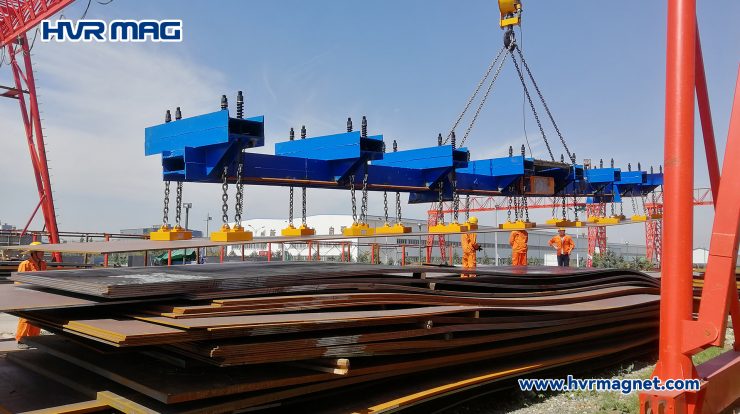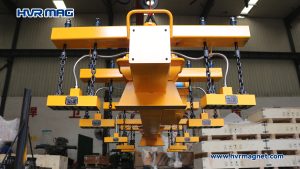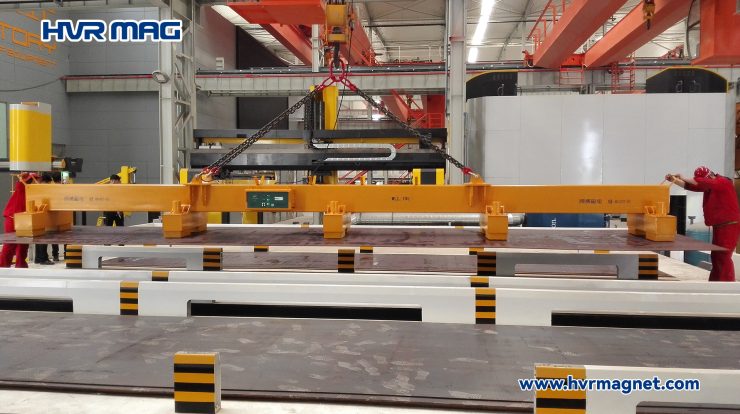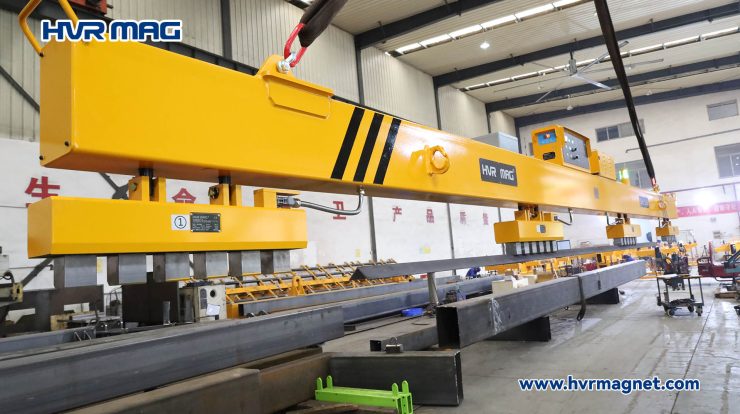Are Lifting Magnets Safe?

Lifting magnets have revolutionized material handling in various industries, providing efficiency, versatility, and time-saving benefits. In this article, we will explore why they are considered safe and compare the safety factors among three types of lifting magnets: electromagnet lifter, permanent lifting magnet, and electro permanent lifting magnet.
Why are they safe?
Lifting magnets, regardless of their type, offer several common advantages and safety features that contribute to their overall safety:
Efficiency
They streamline the process of lifting and moving heavy loads, significantly reducing manual labor requirements and improving productivity.
Elimination of Slings and Cables
They eliminate the need for slings, cables, or hooks traditionally used in lifting operations. This eliminates the risk of those elements slipping, breaking, or causing accidents.
Secure Attachment
When a lifting magnet is properly attached to a load, it creates a strong magnetic bond, minimizing the risk of the load slipping or falling during lifting.
Operator Safety
By minimizing direct physical contact with the load, they mitigate the risk of musculoskeletal injuries among operators.
Now, let’s delve into the safety factors specific to each type of lifting magnet:
Electromagnet Lifter
Electromagnet lifters utilize an electric current to generate a magnetic field for lifting. They incorporate various safety features, including:
Power Failure Protection: Fail-safe brakes or backup power systems are integrated to prevent sudden load drops in case of power failure.
Capacitive Sensing: Advanced electromagnet lifters use capacitive sensing technology to ensure proper contact between the magnet and the load before activation, preventing accidental release.
Regular Maintenance: Periodic inspections and maintenance of electrical components and connections ensure the safe and reliable operation of electromagnet lifters.
Permanent Lifting Magnet
Permanent lifting magnets possess a strong, fixed magnetic field that can lift heavy loads. They incorporate safety features such as:
Mechanical Locking Mechanism: A mechanical locking mechanism prevents accidental magnet demagnetization or load release, adding an extra layer of safety.
Load Positioning and Balance: Proper load positioning and balance are crucial to prevent load instability or tipping during lifting operations.
Visual Load Indicators: Some permanent lifting magnets feature load indicators, providing a visual representation of magnetic holding capacity to ensure safe lifting practices.
Electro Permanent Lifting Magnet
Electro permanent lifting magnets combine the benefits of electromagnet lifters and permanent lifting magnets. They offer specific safety factors such as:
Dual Activation: They require both an electrical signal and manual or automatic activation, ensuring intentional control over the magnetic force and reducing the risk of accidental release.
Magnetic Interlock: These magnets incorporate interlock mechanisms that secure the magnetic force, preventing unintended activation or deactivation.
System Monitoring: Continuous monitoring of power supply, control systems, and magnetic force ensures the reliability and safety of electro permanent lifting magnets.
Conclusion
Lifting magnets are a safe and efficient solution for material handling operations. Whether it’s electromagnet lifters, permanent lifting magnets, or electro permanent lifting magnets, they provide enhanced operational safety, time-saving benefits, and versatility. Nevertheless, it’s crucial for operators to adhere to manufacturer guidelines, receive adequate training, and conduct regular inspections and maintenance to ensure the safe utilization of these lifting tools. With the right precautions in place, they can continue to revolutionize material handling processes across a wide range of industries.
For more information, please contact HVR MAG at export@hvrmagnet.com




